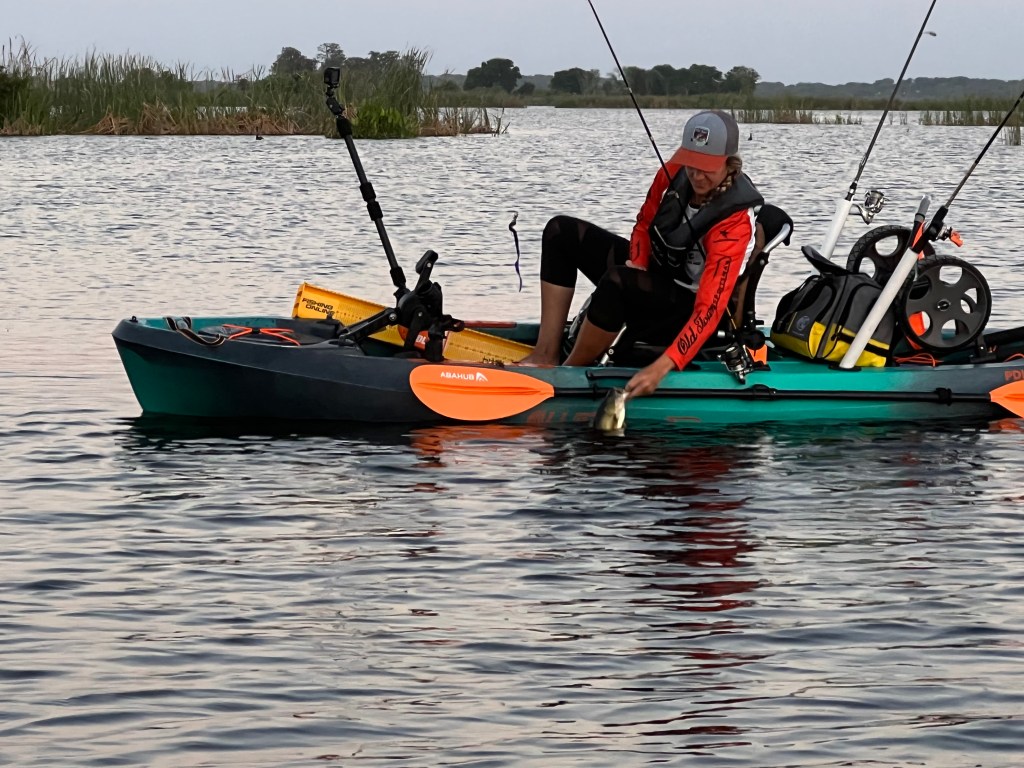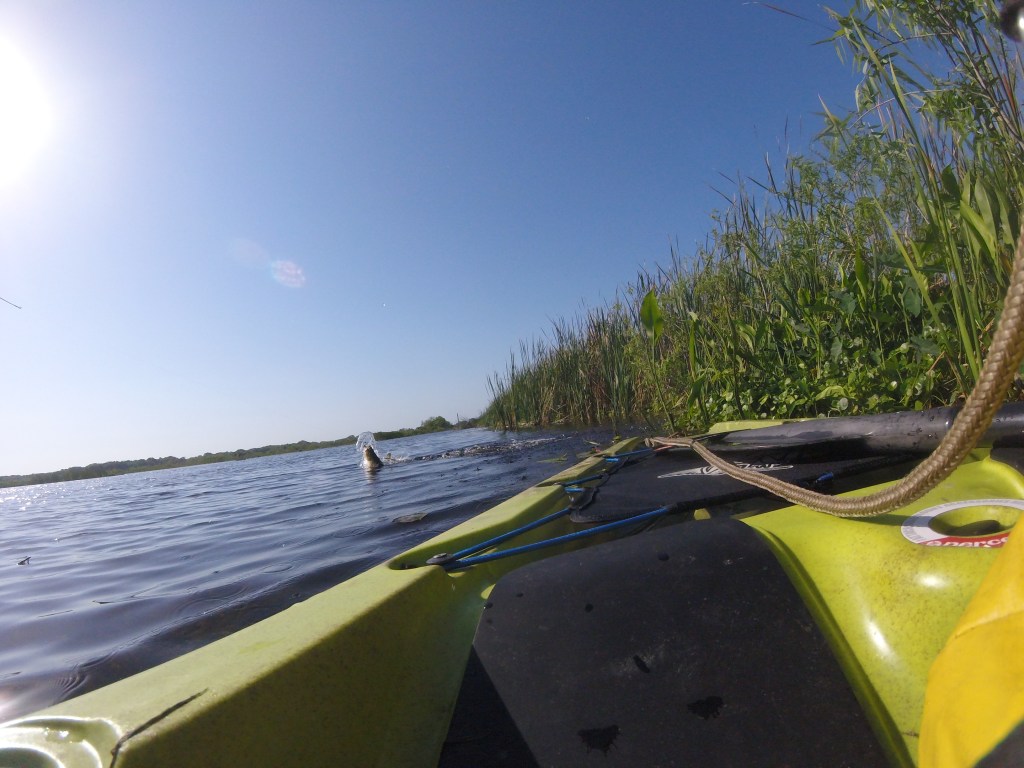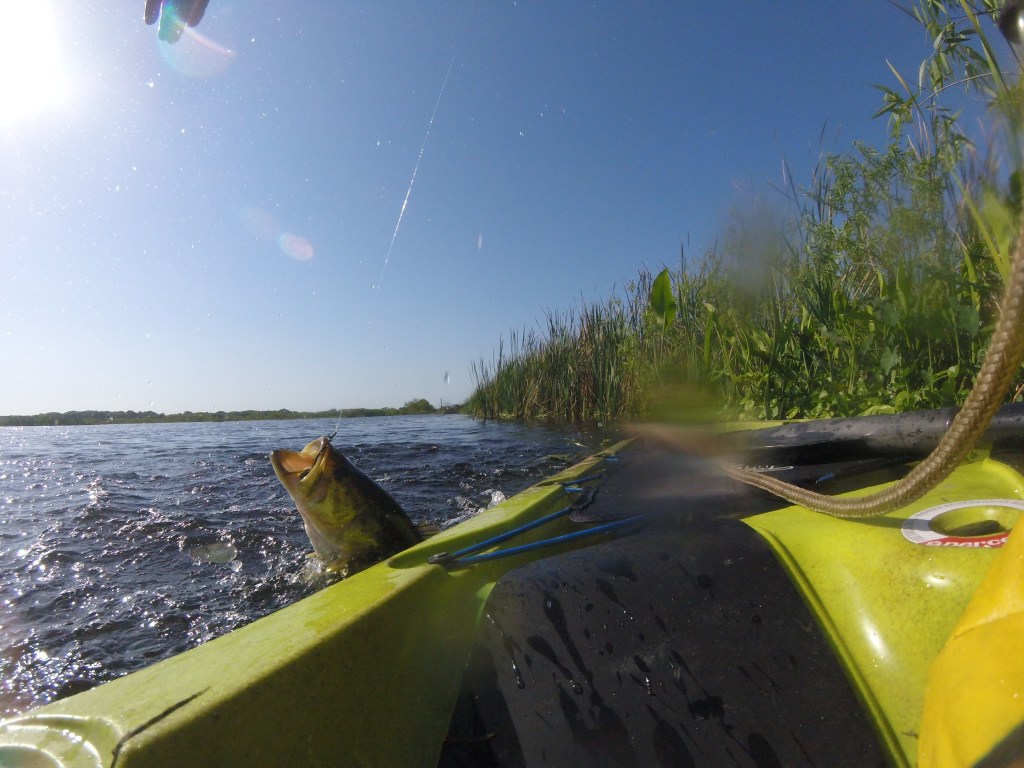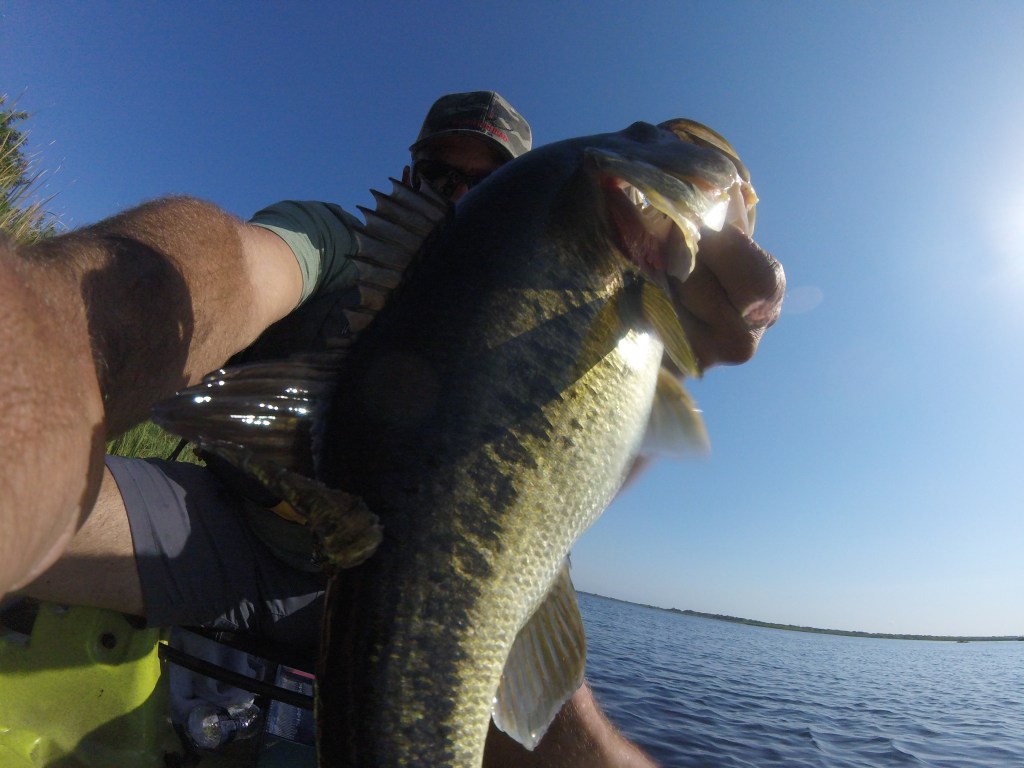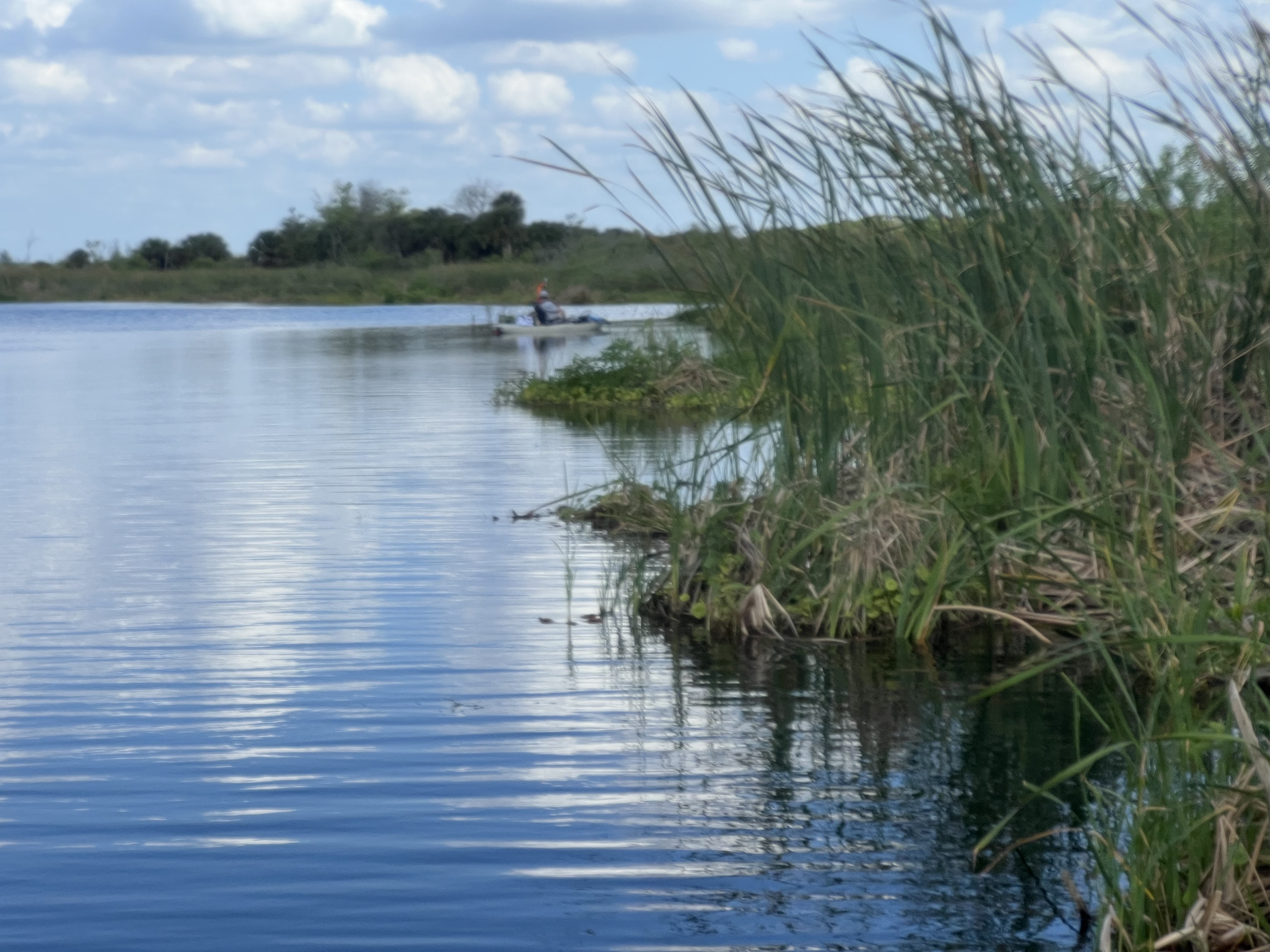
Now that the dust has settled on the whirlwind experience that was my first Bassmaster Kayak Series tournament, I look back at some things I learned.
As an outdoors writer I’ve spent time in the boat with Kevin Van Dam, fished with Drew Benton, Greg Hackney and Denny Brauer more than once. I’ve picked the brains of no less a master than Rick Clunn himself.
I know good fishing when I see it.
During my time with them on the Harris Chain of lakes this past week, I learned that these guys and gals on the Kayak Series are good. Really good. Being good at tournament fishing doesn’t mean always catching fish. We’re dealing with wild animals and Nature has her own plans. Consider your favorite Elite Series pro. At the top level of this game, he strikes out too. There are so many factors beyond his control. The mark of a good angler is that they control the things they can control.
Being good also means using the best available equipment, which may also be the most modern. May not. Being proficient in using this equipment is important. Time on the water helps to that end.
A student of the game will know the fish, not just the bass but also the bait they pursue, and build a gameplan around them.
Of course, you must be able to make the cast, set hook, play and land the fish. Then you’ve got to get it to cooperate while you take a picture of it. You thought getting a toddler to participate in a family photo was hard?
In addition to the skill sets required of your favorite Elite Series pro, kayak angling demands unique abilities beyond those needed by bass-boaters.
Just getting to the fish in the first place takes more work. Setting a hook while seated is different. You know how, in a dream, when you try to run but your legs won’t move? That’s what it feels like to me setting a hook while seated. So I stand when I can, though I have noticed I get more bites when I keep a low profile. Standing in a kayak taxes muscles all over the body that don’t come into play when standing on a boat. Balance muscles.
I’ll say it again, these kayak anglers are good.
They come prepared with the best equipment. Some of them have a backup kayak for their main kayak, decked out with identical sponsor logos and all. Reminds me of a NASCAR team.
Many are running the latest electronics and electric motors. These rigs have everything but the big motor. It’s one thing to know this. It’s another thing to actually line up and compete against it.
I watched one of them back his trailer down the ramp while I untied my cartopped, unadorned craft with no pedals, no motor. Intimidating? I love a good challenge, so it was just more motivation to do well. In my opinion, fishing, in general, and doing so from a kayak, in specific, should be simple and pure. And affordable.
Not to knock innovation at all. I just want to affirm that there are fish out there for all of us and they’re not brand conscious or fashion aware. But that’s fishing. This is tournament fishing, and it demands the best out of you and your equipment so the better you both are, the better you’ll play. That’s just the nature of competitive endeavors.
There’s a sense of community in kayak fishing circles and the guys I met at the ramp were extremely friendly and helpful regardless of what make or model anybody was fishing from. One of them, Josh Counce, even helped me update my TourneyX app so I could ‘check-in’ online before launching. Another, Russ Kennedy gave me a tournament-legal Ketch measuring board the day before. Truly a classy bunch of pros.
Again, good equipment helps. I thought I would be fine to go flip mats and find a few bedding fish in my simple rig. And I was. But as I launched on competition day the predawn winds were strong and coming from a new direction. The wrong direction for me. I took note: a pedal drive system would allow me to hold my position and fish in this stiff breeze, so much more so a trolling motor.
I had a good plan, depending on the weather, which is beyond control. Back to the point about controlling the things you can, it’s hard to compete without some type of hands-free propulsion system.
A good case in point – I thought about drifting the hydrilla flats and throwing some moving baits. I do this all the time when fun fishing on nobody’s schedule but my own. Silent, effective, it would be a great way to catch fish but then, with the tournament day ticking away, the time I would spend paddling into the wind to set up the drift couldn’t be spent casting. Did I really want to fish against this crowd knowing that my casting time would be half of what theirs was as they could pedal and cast at the same time?
No. I decided to spend my time doing something I could do better than they could, specifically because of the way my kayak is built with a smooth bottom – sneaking up on bedding bass. I spent my entire practice time paddling from a standing position to scour hundreds of acres with my polarized glasses. No sonar needed.
On derby day the new wind had changed things and I had to scramble to new areas and find new fish, but the plan was still the right one. For me. The first hours were disheartening. And exhausting. Eventually I began to pluck a fish here and a fish there. Late in the day I had four. This catch-photo-release format that counts inches, not ounces, makes it imperative to catch a limit. A single 8-pound bass at 22 inches is easily beaten by a pair of 12-inch squeakers that wouldn’t weigh 2 pounds combined.
I had to top off that limit.
I returned to a bed where a big girl had swum off earlier. She wouldn’t sit then. Would she sit now? Please. Pretty please? I beached my kayak on a dense crown of hydrilla and watched from a crouched position through swaying cattails. She would not exactly sit on the bed but, strangely, she followed my little Sungill colored NetBaits Paca Slim out to the inside hydrilla edge where she became very animated, flexing fins and turning tight circles every time I hopped the lure and let it fall fast beside her on a free-sliding half-ounce green pumpkin Strike King tungsten weight. The small lure zipping past her nose was more than she could stand. I saw her tail flag up, never felt the thump when she inhaled the craw, just saw the line jump and start moving off to deep water. I hit her. She fought back, went to jump but I pulled her back under. She rolled sideways. That’s when I saw how big she was. She managed a couple of head shakes above water before I pulled her to my hand and locked onto her jaw. A limit secured. With a kicker that absolutely made my trip. She measured 21.5 inches.
I spent the last 20 minutes drifting an expansive hydrilla flat toward the ramp with the wind at my back and a little luck going my way. That’s the final ingredient to being a good angler – be lucky. On a long random cast with a swimbait, I caught a beautiful fish. Beautiful for all the usual reasons plus the fact that at 15.5 inches it culled a 12-incher and put me over the 80-inch mark with 5 minutes left to fish.
I had no idea how tough it had been for everybody else, that Justin Largen of Virginia would win with 93.25 inches or that he would be the only angler in the field to surpass 90 inches in a tournament where multiple 100-inch totals were expected. I just knew that I had made good decisions and done what I could under the changed conditions.
Back to the point that the Bassmaster Kayak Series boasts a field of talented anglers, when he spoke about his win, Largen sounded as thoughtful and intelligent as any tournament pro I’ve ever interviewed. He noted that the bass were keying on shad, which dictated lure choice, and that he had to locate some fish late on the final practice day as his bedding bass had been decimated by a local fisherman the day before. He made the strategic decision to fish a small, lesser-known lake in the famous chain, Trout Lake, and to show the fish a lure he felt the rest of the field probably wouldn’t, the Strike King Hybrid Hunter which Ray Hanselman used to good advantage in the recent Elite Series event on the Harris Chain.
Truth is, there’s little difference between a kayaker and a boater. They’re the same person. Consider Elite Series Pro, Bassmaster Classic Champion Mike Iaconelli. He loves to fish from his ‘yak. He even totes it around on top of his truck as he tows the bass boat behind.
An angler is an angler, and these anglers are good. Really good.
